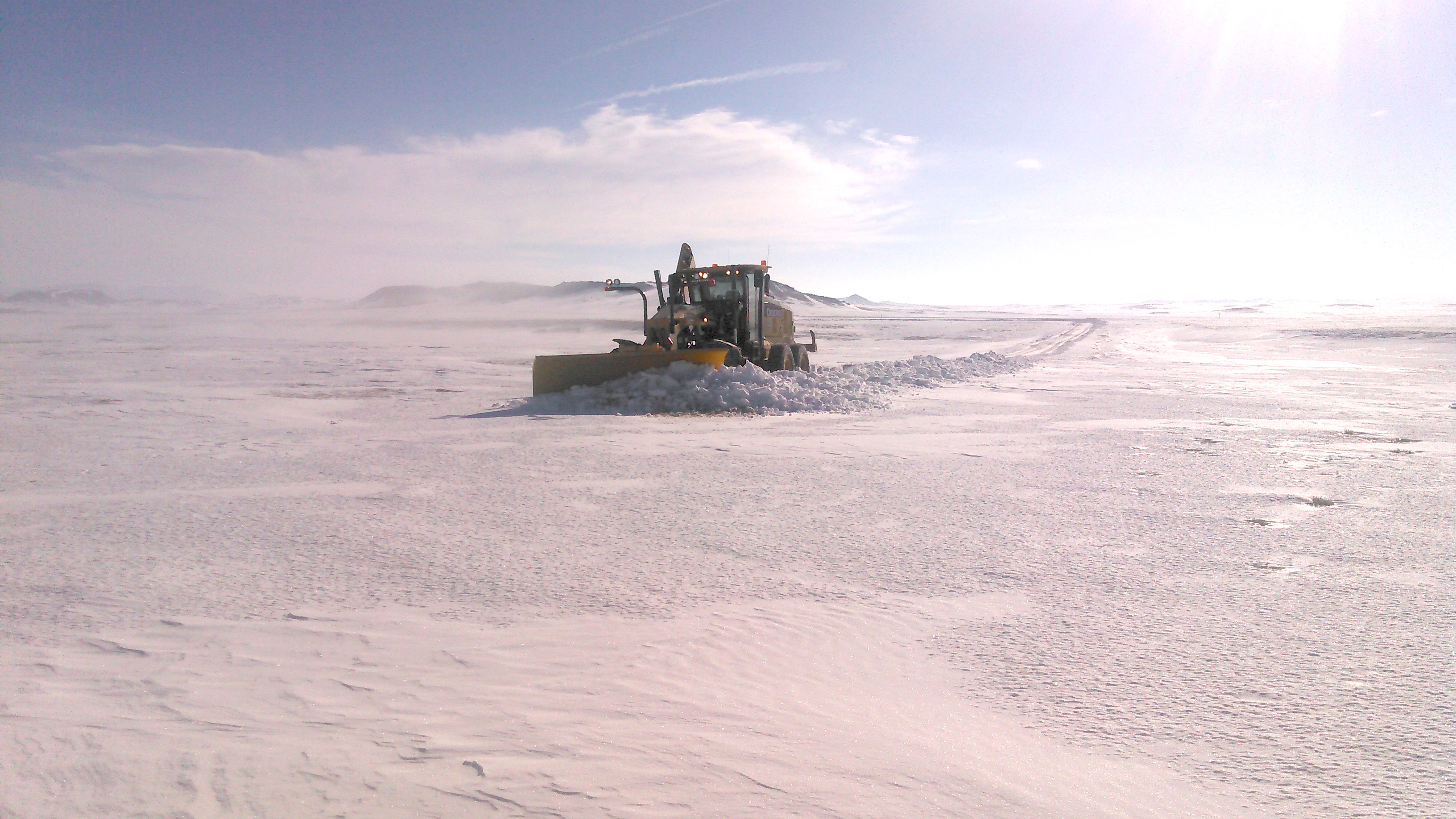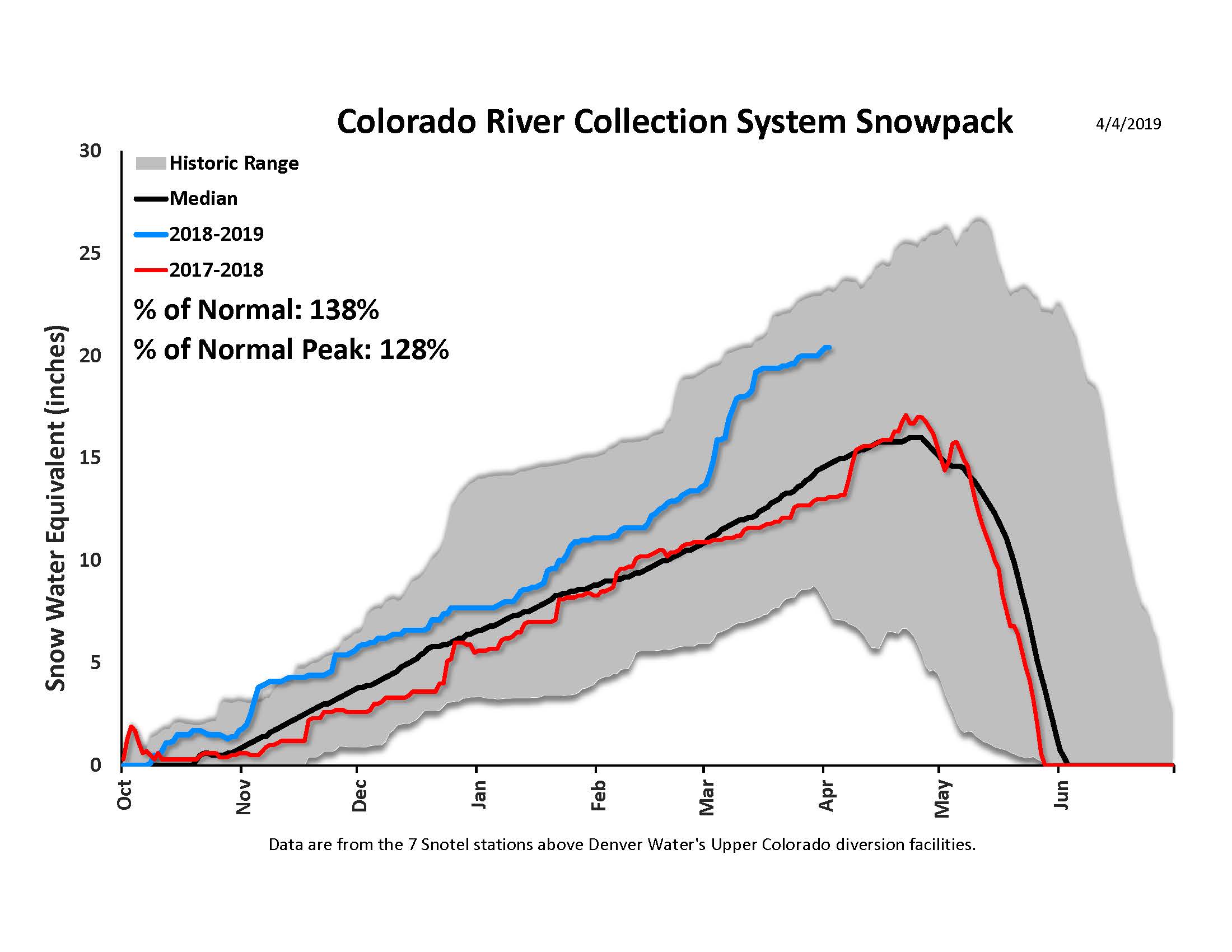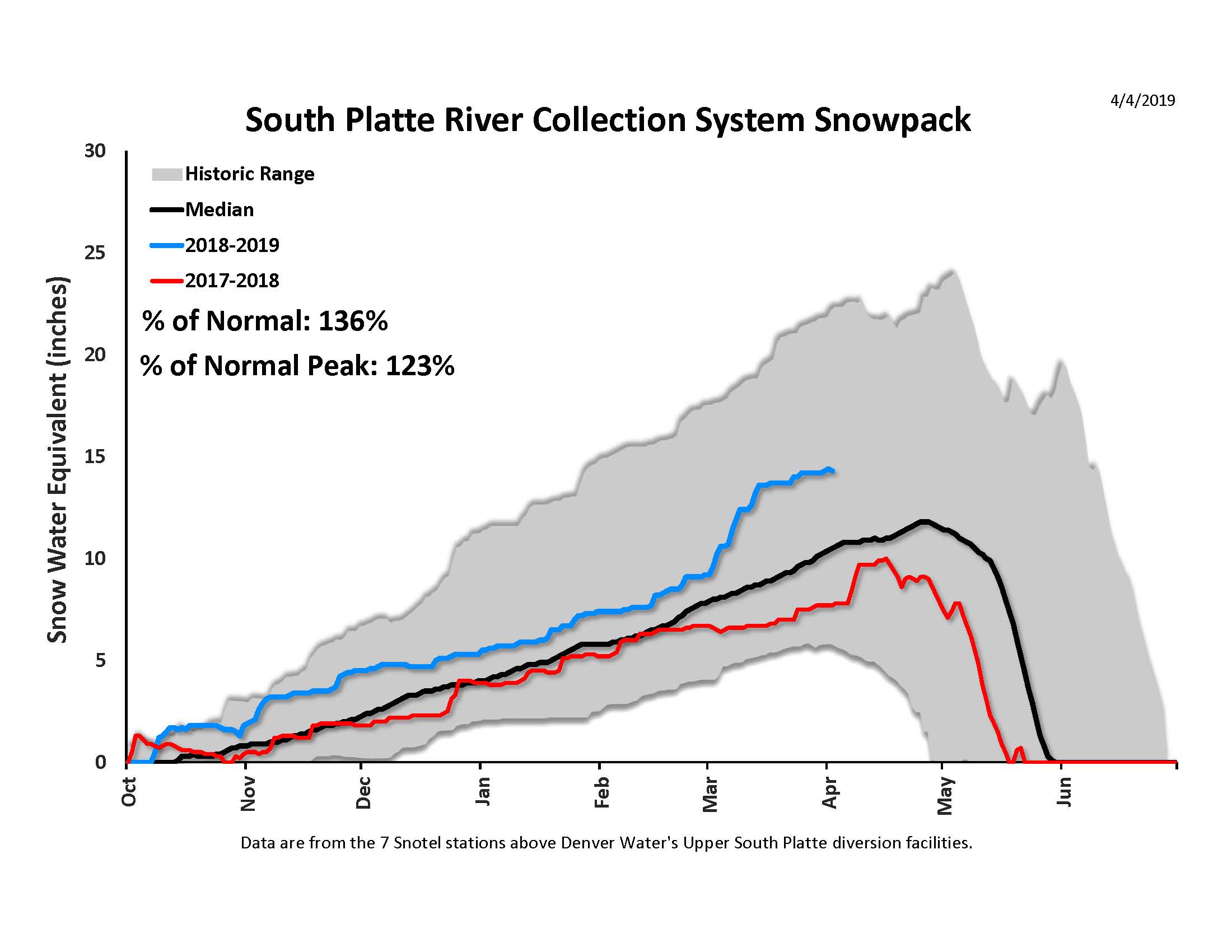
By the numbers: March’s record-breaking snowfall
This March, when all was said and done, Denver Water's Colorado River and the South Platte River collection systems had the largest snowpack since 1996.
Here’s March 2019, by the numbers:
Snowpack
Thanks to repeated storms and a “bomb cyclone” in March, the snowpack in Denver Water’s Colorado River collection system, which provides about half of Denver’s water supply, reached 140% of normal. In Denver Water’s South Platte River collection system, where the other half of Denver’s water supply comes from, the snowpack was at 138% of normal.
“This year, the end of March snowpack is the most we’ve seen at this time of year in more than 20 years," said Nathan Elder, Denver Water’s manager of water supply.
Snow water equivalent
In addition to the depth of the snow, the amount of water it holds also is a crucial factor in determining summer’s water supply.
Not only were the snows deep in March, they also held a lot of water.
Typically, Denver Water’s Colorado River collection system receives around 2.9 inches of snow water equivalent during the entire month of March. This year, that area got its entire monthly allotment during the first seven days of March.
And that was before the “bomb cyclone” blizzard blew through the state in mid-March, dumping more snow.
“March saw impressive snowpack accumulation, with 230% of normal precipitation in Denver Water’s Colorado River collection system and 204% of normal in the South Platte collection system,” said Kathryn Weismiller, water resource strategy senior planner for Denver Water.
This year, the South Platte Collection System in March received 5.1 inches of snow water equivalent, more than twice the area’s monthly average of 2.5 inches. The March record is 5.2 inches set in 2003.
Summer water supply
Every year, we are asked how much water Denver will have for the summer.
The answer depends on many factors, like the amount of snowpack during the winter months, the runoff in the spring, seasonal weather conditions and customer use, among others.
"All this snow should provide a healthy water supply for the summer,” said Weismiller.
A healthy, long-term water supply, however, still depends on our customers using water efficiently every day and following Denver Water’s summer watering rules from May 1 to Oct. 1.
While summer water supply is looking great, it’s important to remember that half of Denver’s water supply comes from the Colorado River, which has been plagued with long-term drought.



